Werder Bremen is one of the Bundesliga sides who have surprised the most in the beginning of the 2018/2019 season. With their head-coach, Florian Kohfeldt, Werder play attractive football with success. Before the season, many derided their publicly claimed goal to reach European spots. However, at the moment, Werder are on track for achieving this target. Not least because Werder have a clear style of play that has allowed them to dominate most of their opponents. The following analysis will unveil Kohfeldt’s approach and the key reasons for the current success of Werder Bremen.
Positional Play and Positional Fluidity
Head coach Kohfeldt combines concepts of the positional play with positional fluidity. Therefore, Werder set up in a 4-3-3 with a midfield diamond that Ajax used to deploy for a long time. Bremen even signed a former Ajax-player in Davy Klaassen before the season.
Instead of setting up wingers on the flanks, strikers such as Harnik and Osako often play on the winger positions. They can make use of the fluidity that comes along with lining up captain Max Kruse as the centre-forward. Since Kruse likes to drop into midfield to help his teammates with his playmaking abilities, space in the centre is created for diagonal runs of the wingers.
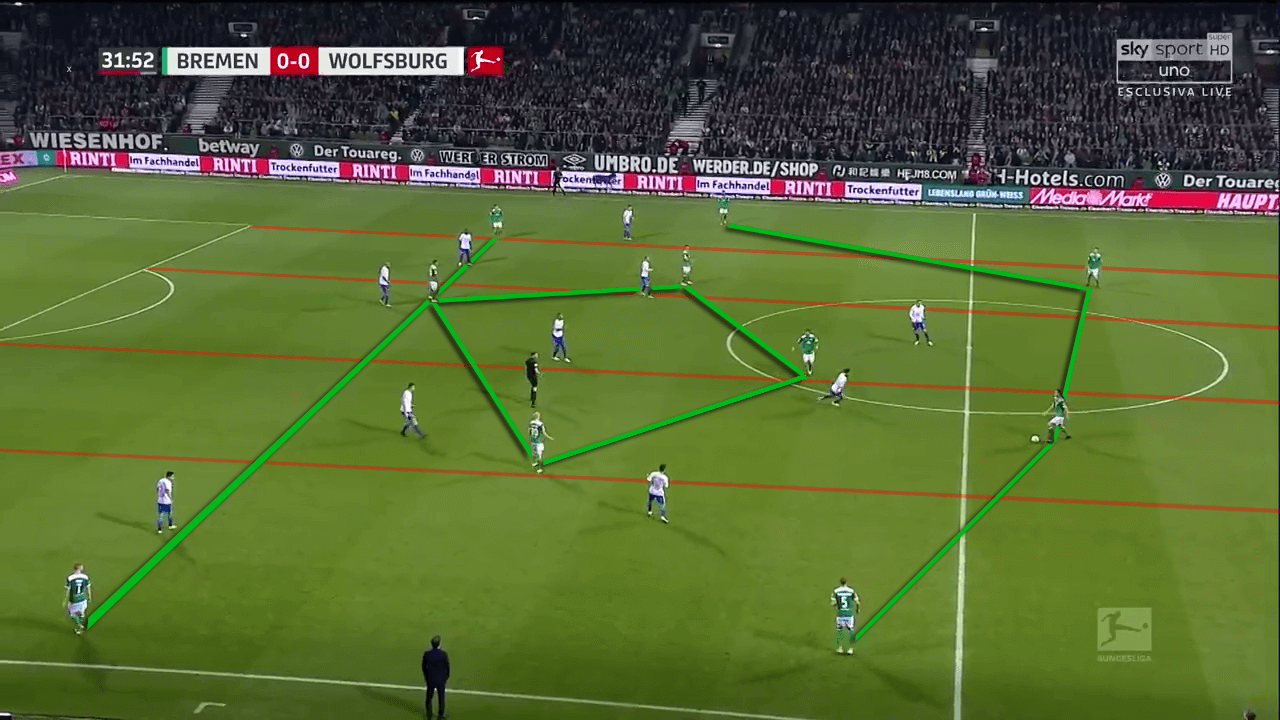
In their 4-3-3, Werder provide width, depth and occupy central areas as well as wider spaces on the pitch. Every player should get on his position in the beginning of the attacking phase. This tears the opposition apart and creates passing lanes into areas further up the pitch. Whenever Werder play the ball to one side in the build-up phase, the midfield starts to quickly rotate to get rid of their markers and receive the ball in more advanced areas.
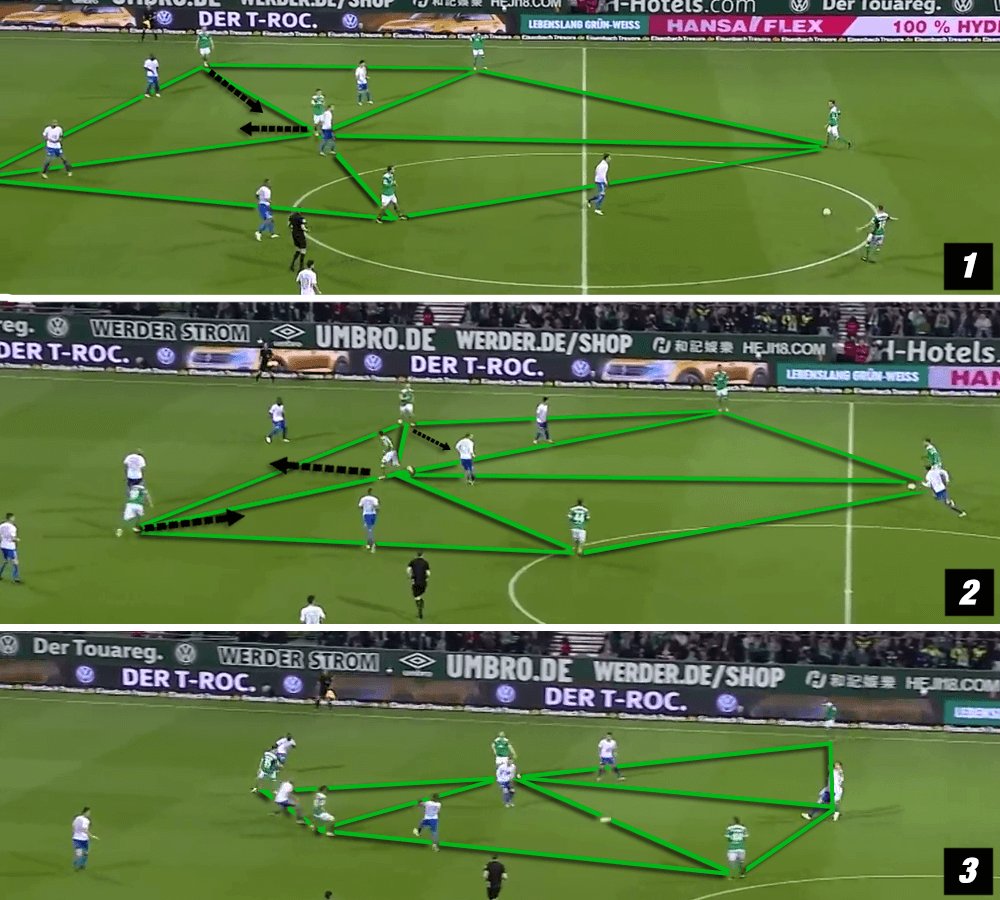
The graphic above shows one of their common rotational movements. Eggestein as a central midfielder makes a deep run to attract opposition defenders. That opens up new space in midfield for Kruse and the ball-side winger to drop. As the winger often drags the full-back out of position, Bremen’s full-backs have space to move up the line in these situations.
Wing attacks with high full-backs
As in the last season, Bremen like to attack down the wings. A common strategy of Kohfeldt’s side is to overload one side of the pitch, to quickly exploit created space on the other side. Since the opponent shifts towards the ball, 1v1 situations will be created on the ball far side. A switch of play enables Bremen’s winger to either cut inside for a shot or to take a cross for the striker and central midfielders who run into the penalty-box.
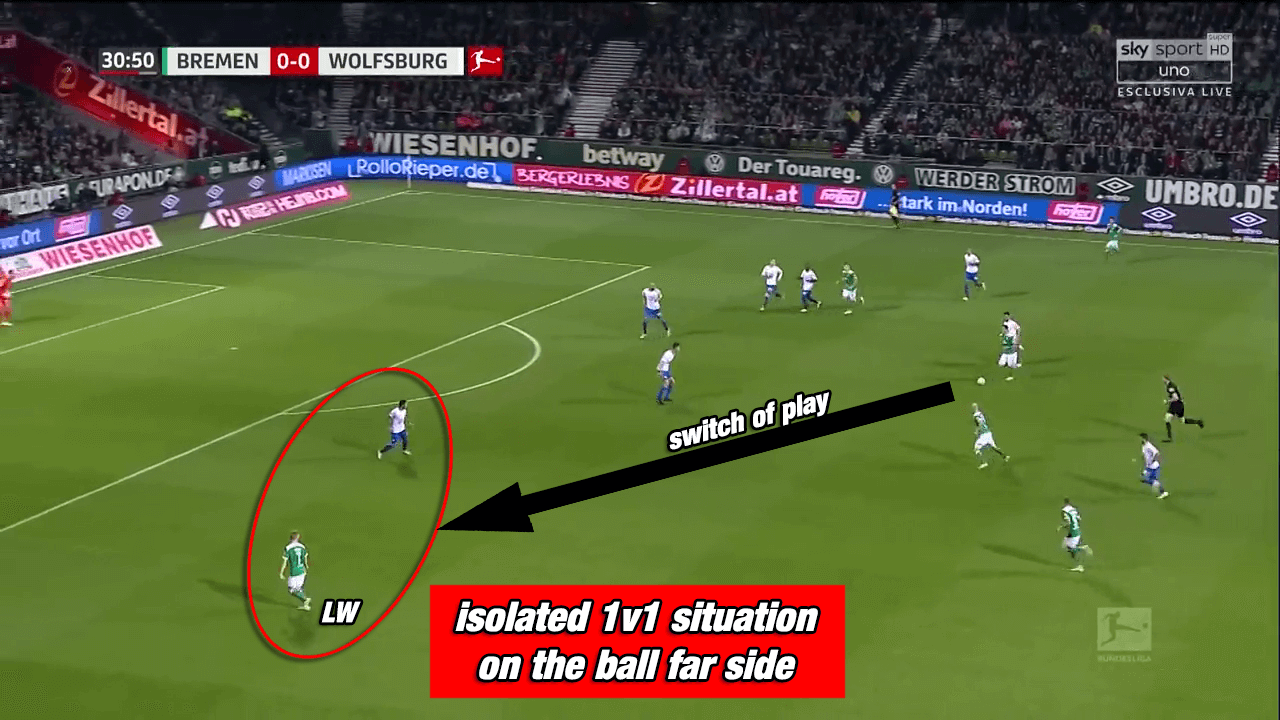
Another key aspect of Werder Bremen’s style of play is the offensive contribution of both full-backs. Gebre Selassie and Augustinsson always support the attack on their side. Either they already receive the ball in a high position or they join the attack with overlapping or under-lapping runs.
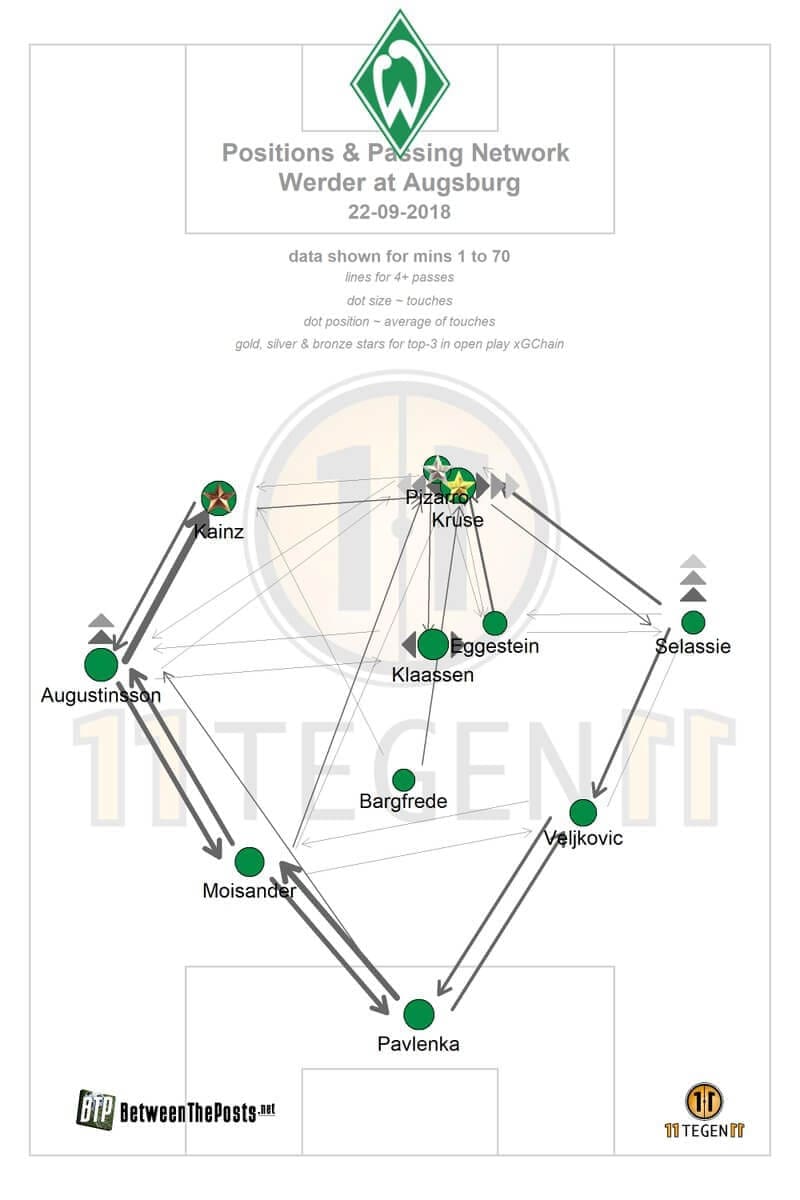
The above positions & passing network (made by 11tegen11) proves the foregoing mentioned contribution of full backs in the attacking phase. In Werder’s match against Augsburg, Gebre Selassie was positioned even higher than Klaassen on the pitch. The graphic underlines the emphasis on attacking down the wings too. Augustinsson had more touches than central midfielders Bargfrede and Eggestein. Moreover, passes from the left-back to winger Kainz have been the most frequent combination.
Last but not least, the heading ability of Gebre Selassie is of help whenever Bremen struggles to play out from the back. Often goalkeeper Pavlenka plays long balls to the right-back who wins a lot of his aerial duels.
Set-piece situations: Defensively solid and offensively creative
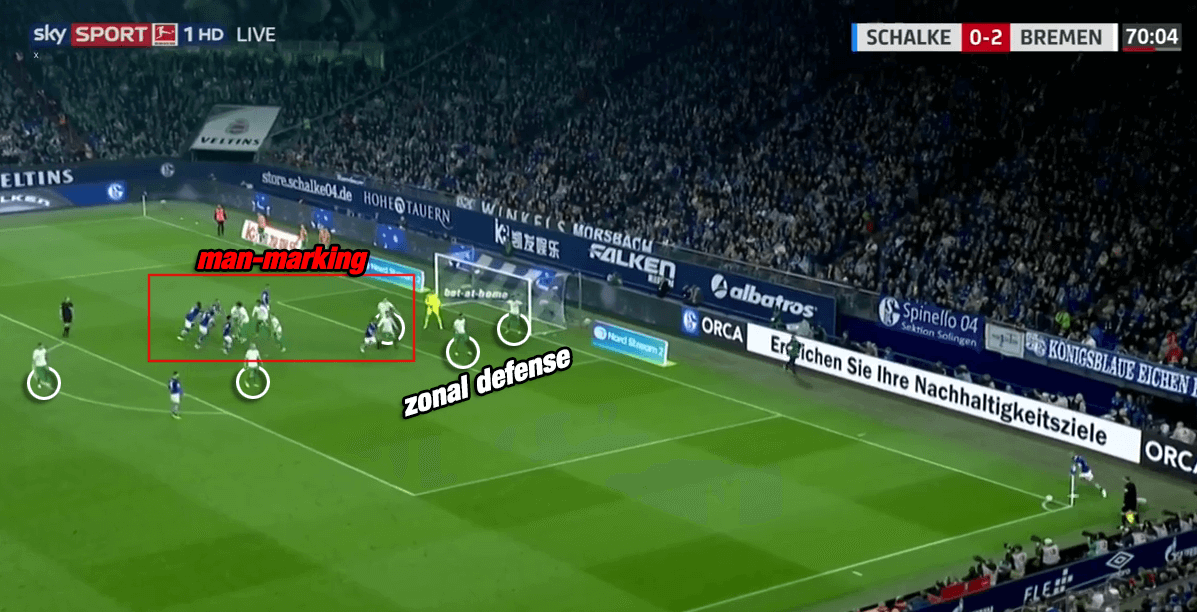
Besides Bremen’s attacking play and their defensive tactics, Kohfeldt also seems to lay emphasis on training set-piece situations. The Green ‘n White have not conceded a single goal from a free-kick or corner-kick this Bundesliga season. To defend corner-kicks Kohfeldt prefers to have all of his players in and around the own penalty-box. That way, Bremen has enough players to use a man-marking approach with five players and a zonal defence with the other five players.
In the offence, Werder have already scored four times from set-piece situations (penalties not included). This is not a coincidence as the Northern German outfit have some different corner-kick and free-kick variations that are difficult to defend.
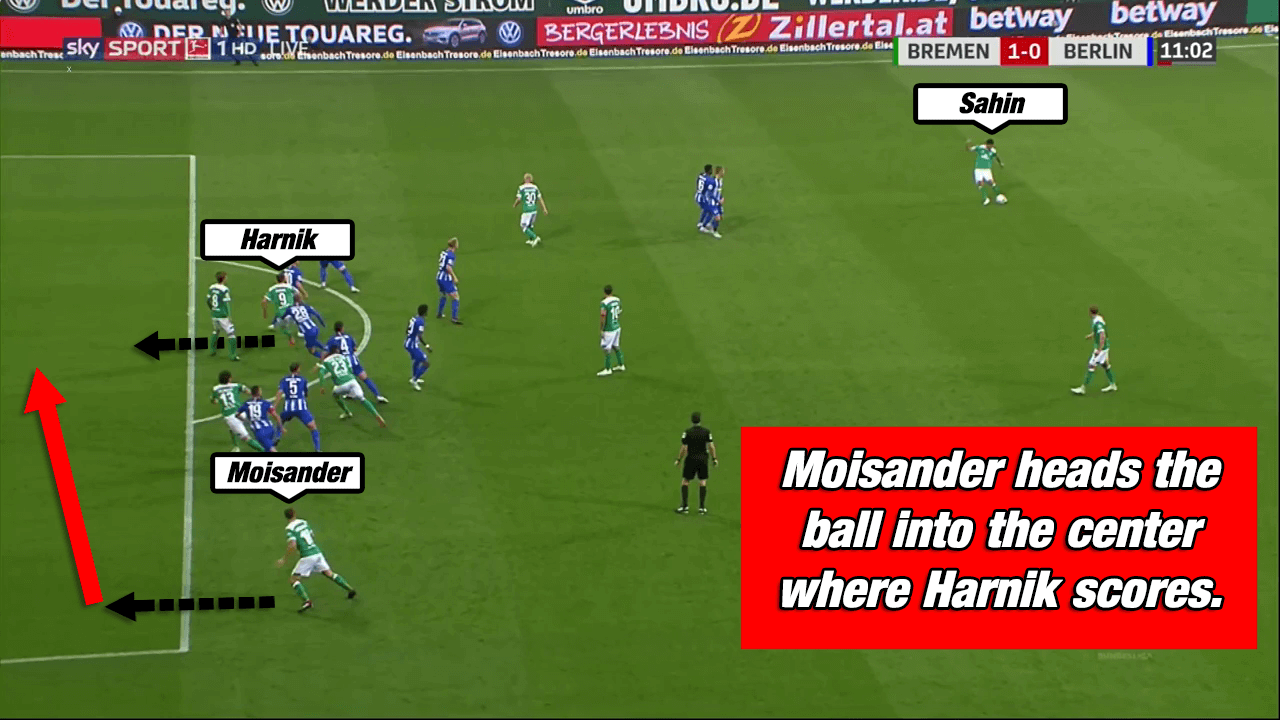
Against Hertha Berlin for instance, Bremen scored from an indirect free-kick. Therefore Sahin played a long ball to Moisander who dropped to the far post in the back of all defenders. From there, Moisander brought the ball back into the centre where Harnik scored.
Tactical Flexibility
Werder Bremen are unpredictable in terms of their system under Kohfeldt. Whereas their 4-3-3 with Kruse as a false nine is their favourite system, Bremen also played in a 3-5-2 system this season and used many other different formations.
However, head-coach Kohfeldt nearly always uses a single pivot and two advanced midfielders in central midfield. That is why the difference is mostly just the number of attackers and defenders. But Kohfeldt changes the way of playing more through the different roles his players can play due to their strengths. Whereas Bargfrede often plays as a single pivot in front of a back-four, new signing Sahin who came from Dortmund rather plays the role of a single pivot in front of a back-five as he is defensively less solid than Bargfrede.
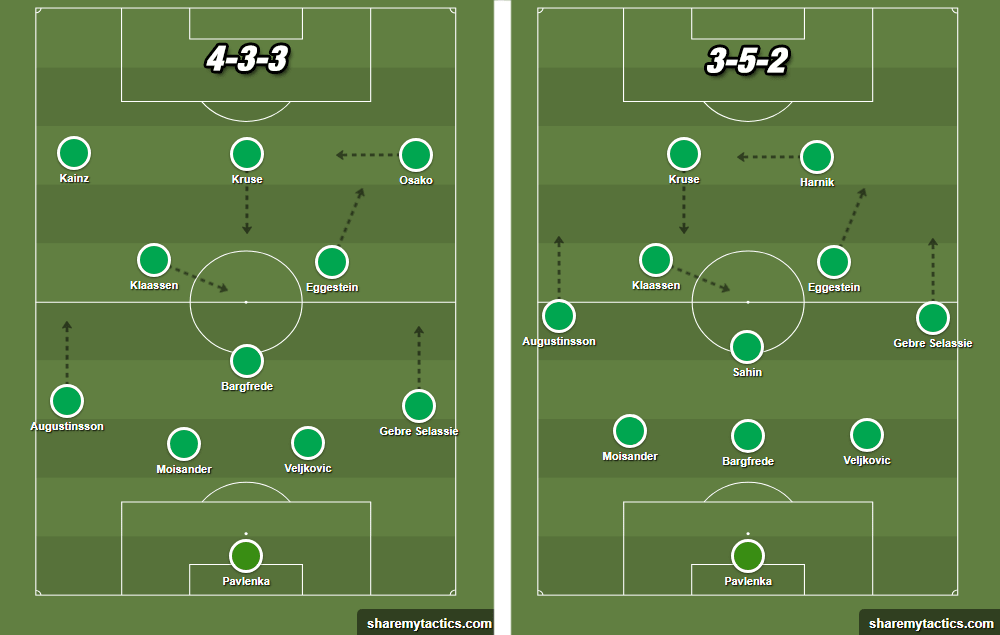
To allow quick allocation in their defensive shape, Werder sometimes use a different shape to defend than in the attack. Bremen tries to keep one spare man at the back to ensure numerical superiority in the last line of defence. Whether they press high up the pitch or rather sit back differs from opponent to opponent and depends on the match plan.
Perfect mixture of young talents and experienced leaders
Last but not least, the club might have found the perfect mixture of young talents and experienced leaders. Werder Bremen is known for developing young players. This concept seems to pay off as Maximilian Eggestein played a phenomenal season so far (see statistics below). Centre-back Veljkovic is another young player who made the breakthrough. As an established player in the back-four he can profit from the experience of his 33 year-old neighbour Niklas Moisander.
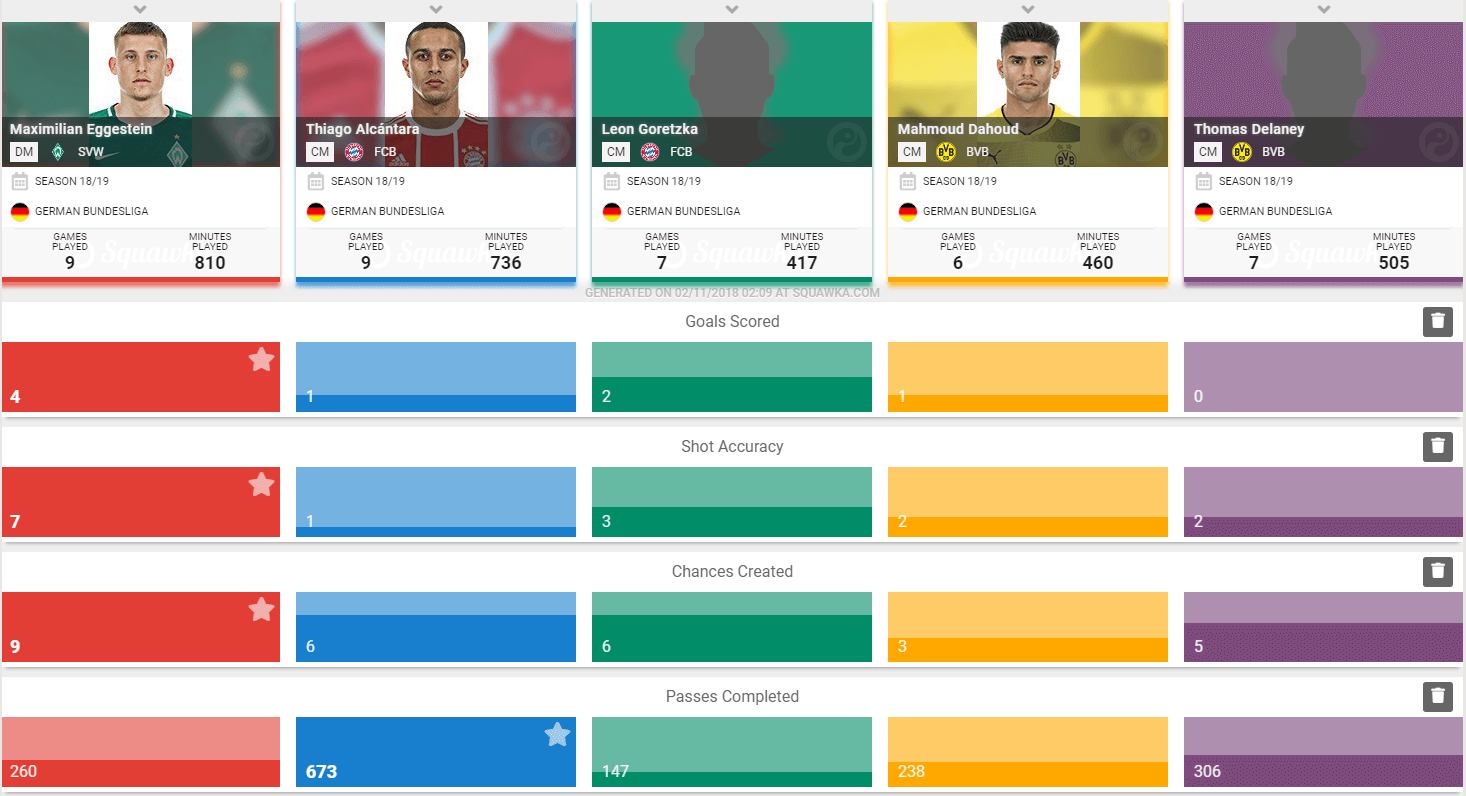
In Rashica, J. Eggestein, J. Sargent and Plogmann there are still more youngsters who might make the breakthrough in the future. One can already look forward to the next players entering the Bundesliga stage for a club who is interested in developing talents.
Conclusion
Werder Bremen don’t only shine with one strength but with a clear philosophy and their unpredictability due to flexibility and creativity. Their recent success with a constructive style of football might have a positive effect on the Bundesliga which has often been criticised as a “pressing league” where teams only defend.
At the moment, all signs point to the participation of Werder Bremen in a European competition next season. However, it remains to be seen whether Bremen can continue their successful path in times of being the favourite instead of being the underdog.




Comments